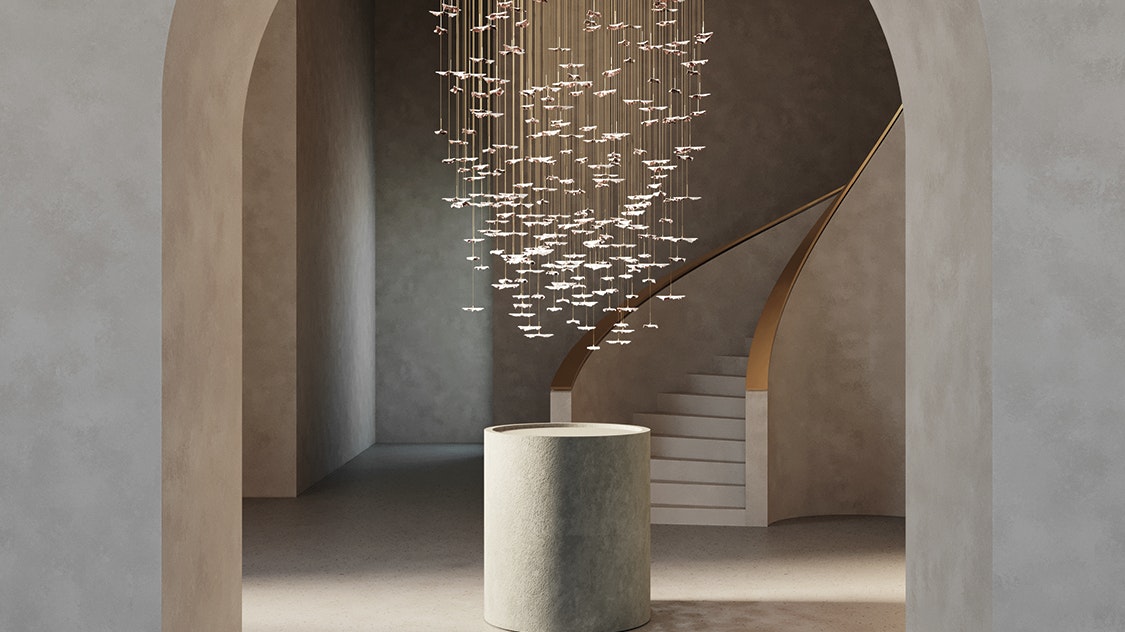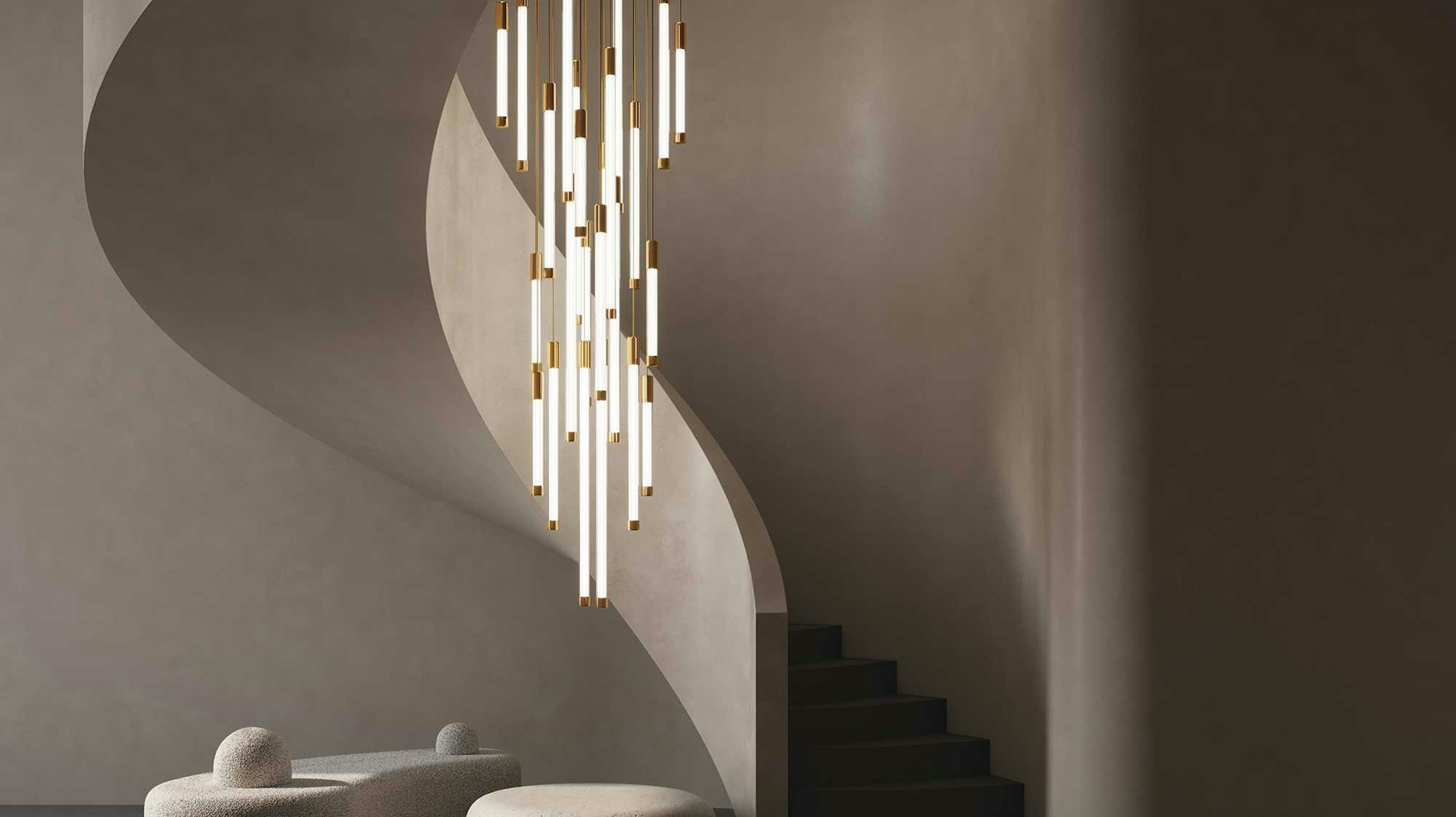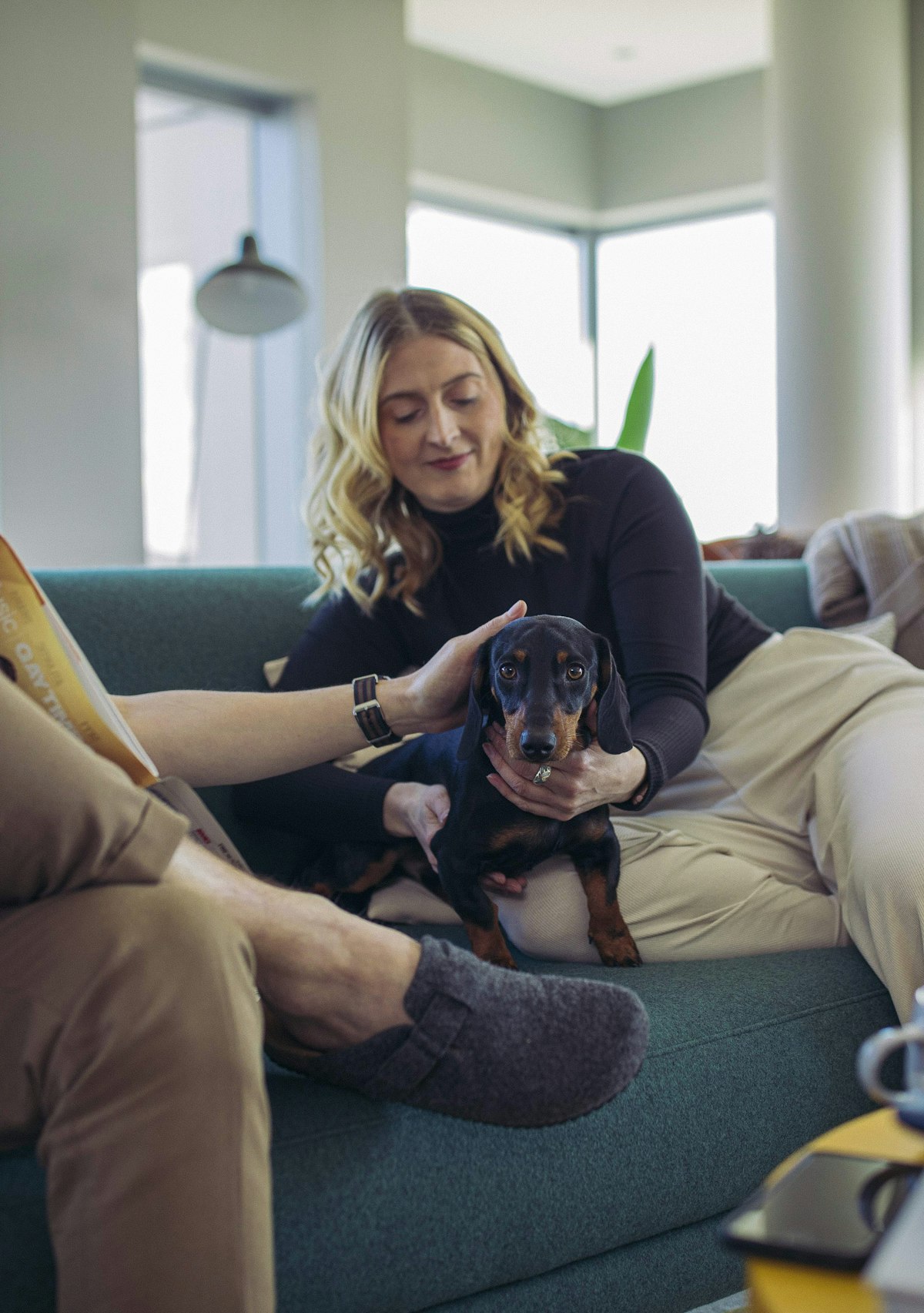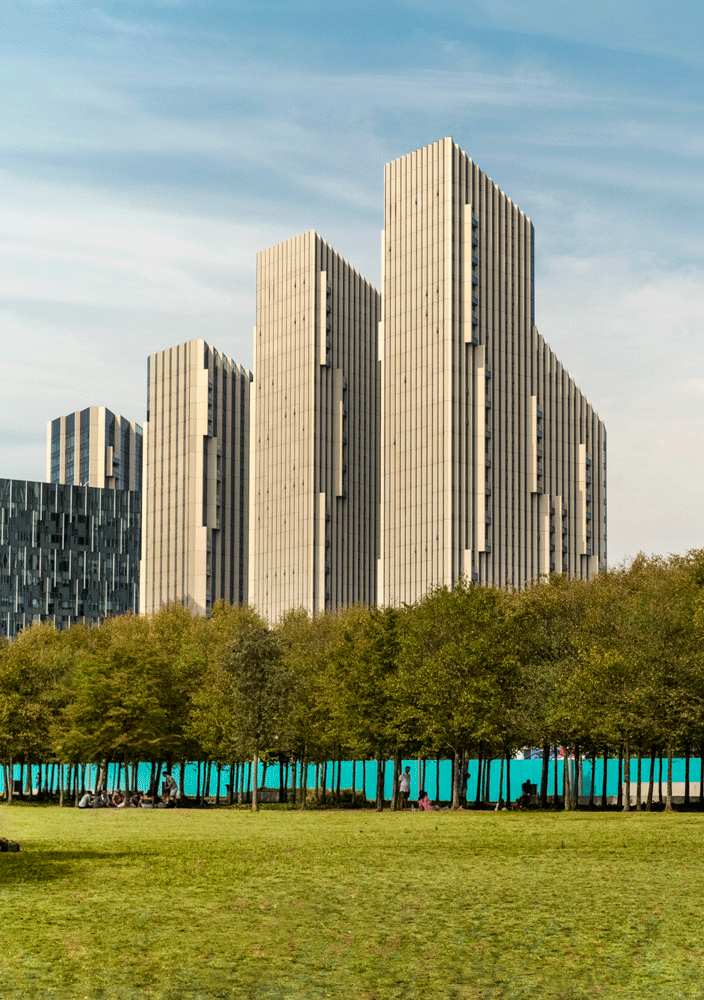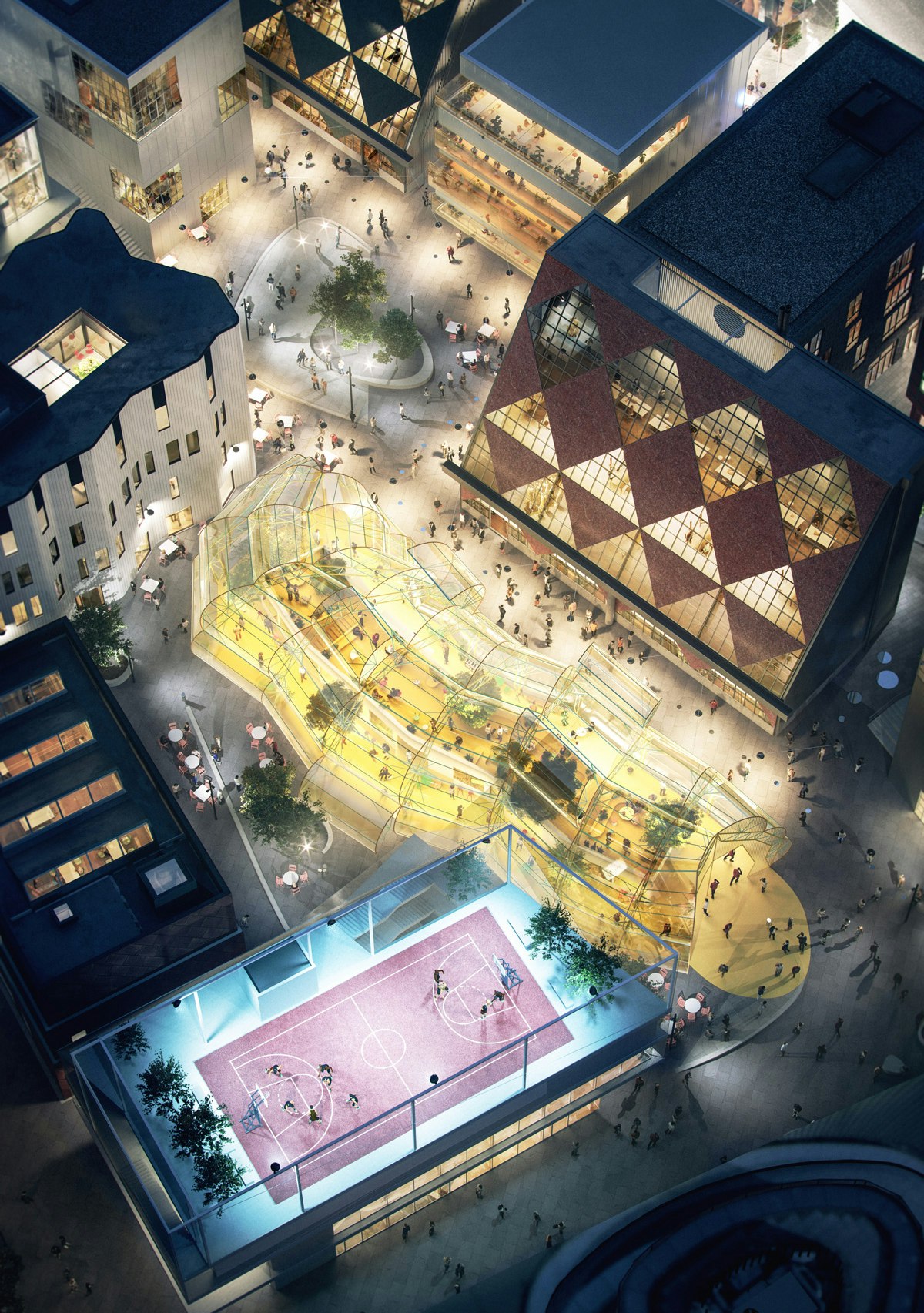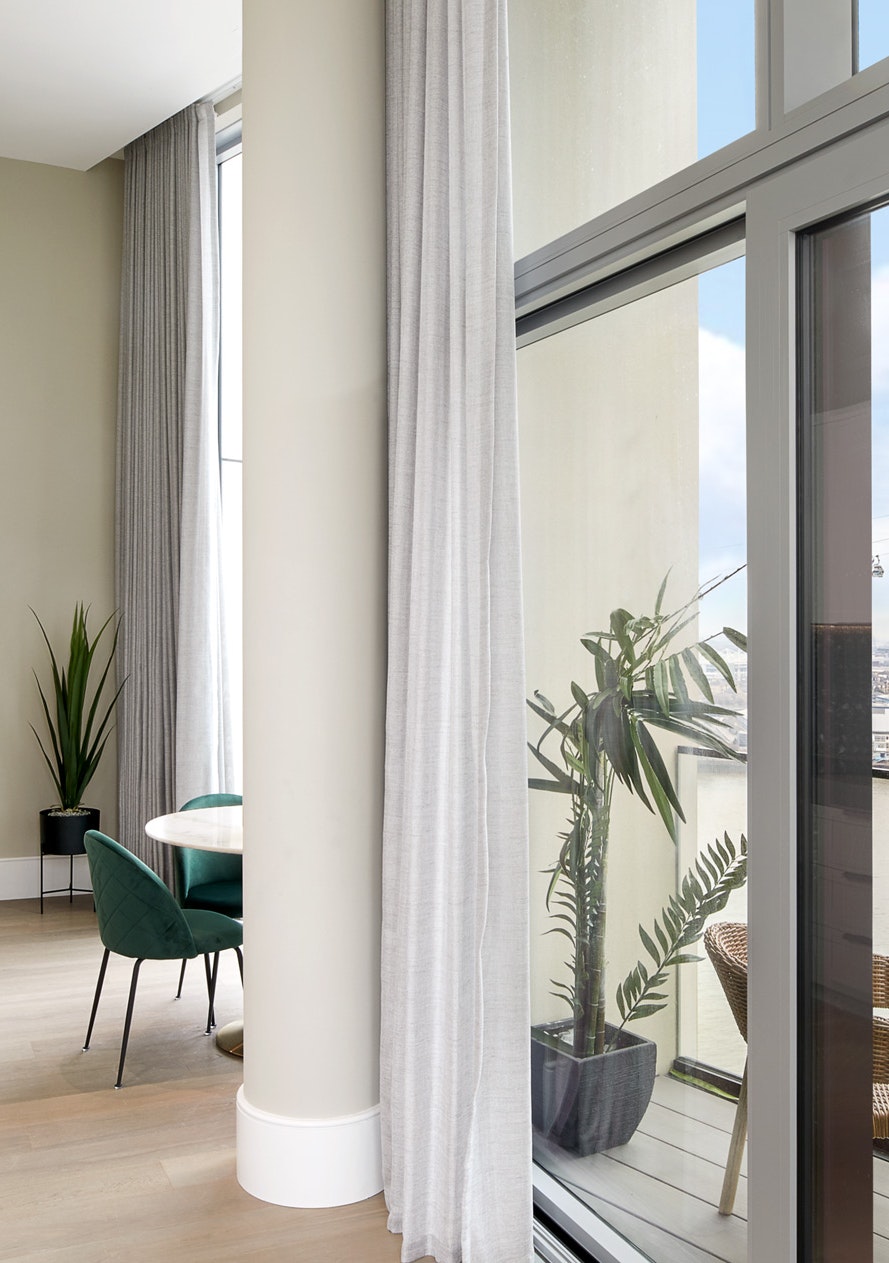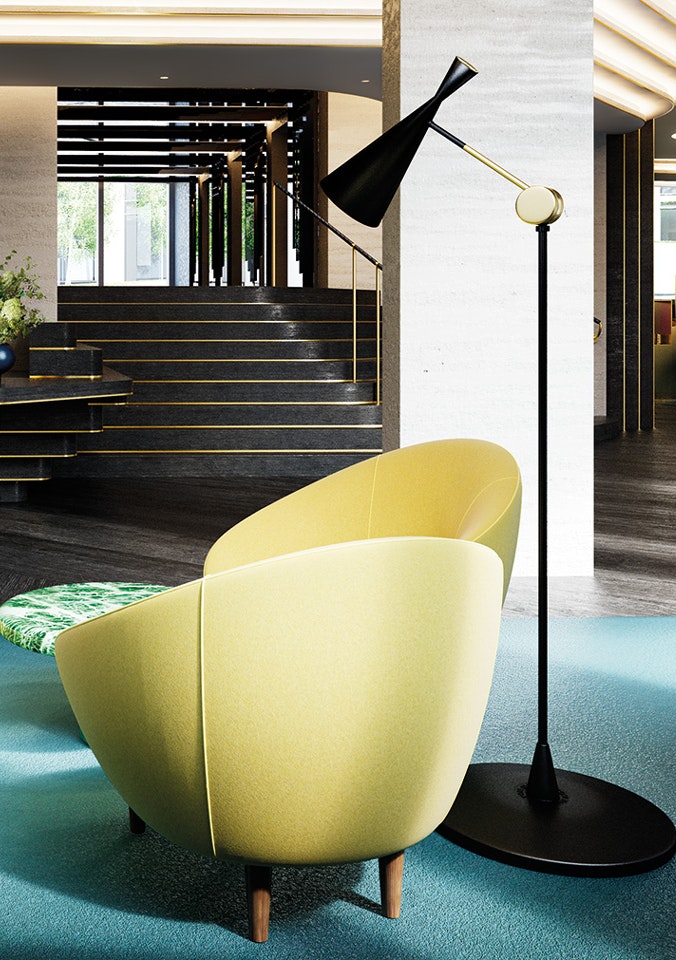
Shadow Play
Haberdashery cofounder Ben Rigby on the studio’s bright future, designing with light.
WORDS BY BILLIE MURABEN
Before setting up Haberdashery 15 years ago, co-founders Ben Rigby, Daniel Siden and Mac Cox worked in film, where light – and its potential to inform the narrative, atmosphere and the nature of a space – played a considerable role in their work. “We were interested in that controlled environment,” says Ben, “all working towards that moment of discovery where you walk into a space (or a camera brings you into that space), and you see something that is perfect. All the surfaces work as a considered language, and that is still our approach now.”
These days they bring that understanding of light and narrative into a design practice that combines refined material palettes with stylised forms, creating lighting centrepieces that balance the rhythms of nature and directed narrative environments. “We like to design how light works with material, rather than leaving it up to chance,” explains Ben. “Our ‘Sand & Sea’ collection is made from crystal. We control how light reflects off the pieces that have a metallic finish and how it passes through the clear elements to create these wonderful light and shadow effects on the floor.
“For us, that has a lot more value than the random nature of materials that distort during the making process. By being able to design that very specifically to our requirements, we have created something that looks organic in its form, but has the added value of us being in control of light as a language.”
The result is a collection inspired by the curves of sand dunes and waves, with cast translucent crystal ripples suspended with strands of glimmering microfine thread and down-lit to project rolling shadows across the space. “It is a simple narrative, rooted in these beautiful parallels between undulating forms and the surface of the sea, and where the two meet, as waves run over the beach.” Of course light takes centre-stage and creates a luxurious, ethereal atmosphere.
“What we do best is create centrepieces for space,” says Ben, “so light becomes the hero story that everyone gravitates towards. It also has an identity that shifts through the day as natural light passes through the space and pulls on different surfaces, telling different stories.”
The approach at Haberdashery, of drawing people into the worlds created by light, and the narratives that inform their sculptural work and collections, has a clear through-line to their work in film. They understand clearly the importance of carrying an audience through a story, and the role light can play in doing so. Their focus on research, depth of thinking, and understanding of form is at a level more commonly associated with an art practice, rather than what is expected of a design brand, and they straddle both worlds.
When they started out, Haberdashery was focused on bespoke pieces, commissioned by architects, interior designers and galleries: “It's a bit of a funny space we occupied because the clients call them sculptures, but we are not artists, we are a design studio. We solve complex problems to fit work into difficult spaces.”
These difficult spaces include Foster + Partners developments, Selfridges, London, hotels, luxury developments, and residential settings around the world. For the lobby of the Mandarin Oriental Ritz hotel in Madrid, Haberdashery created ‘Remolino Del Retiro’, a delicate entanglement of photo-etched brass and nickel floral forms drawn from Madrid’s botanical garden, which creates elaborate shadows across the ceiling and floor, bringing the interior to life.
Working out the balance between making one-off pieces and wanting to grow as a business led to Haberdashery creating product collections in a range of materials, each carrying a different story. “We would find narratives to weave through each piece, whether it was through material, in the form, or through a decorative element. That gave a sense of ‘reason to be’ for each design,” says Ben.
Now, the studio is at the beginning of a journey to push an increasingly ambitious, contemporary look at what that high end of decorative lighting can be. “We want to push the market to a place where it questions what materials actually have value. Where the design – the story – puts the value into the material, rather than having an opulent finish, or an inherent value in the material itself.”
With this in mind, the studio threw open its doors for the 2022 London Design Festival, transforming its showroom into both exhibition space and a forum for collaboration and discussion. Moving forward, they plan to use the showroom as an ambitious test-site, bringing depth to commercial work, challenging the market, and bringing experimental ideas to the luxury customer base. “We want to start conversations within our industry, and our client base, questioning whether we have seen all the benefits a material can bring. Over the next year we are going to bring in work by graduates and designers, and explore subjects and questions through materials.”
This kind of open, collaborative approach is essential to a studio where everything is designed in-house. As Haberdashery’s bespoke, sculptural works become prototypes, they create opportunities to develop new ideas. “A lot of the experimentation is physical rather than digital,” says Ben. “We like to try and stay out of the computer as long as possible and find interesting relationships between light, material and form. We can then distil that down to something very controllable.”
Despite this forensic attention to detail, the studio keeps its briefs open and its pool of collaborators broad. “We identify an emotional relationship between an object and a person, for example, and find a number of ways to unpack how that could be represented in a 3D form. There is a lot of collaboration at key points. We have such a range of skills in the company and we collaborate with manufacturers and workshops, which allows us to really push the boundaries.”
Haberdashery started out working with small-scale manufacturers and craftspeople, “ceramicists, or amazing machinists who can do something really beautiful, and put a lot of care into their work”. As the business grew, they developed relationships with larger companies, who can produce at scale, but have maintained the focus on collaboration, and continued working with local artisans. Creating opportunities for UK craft is central to the brand. “We like to find places in the UK, because we like to go meet the person, the pair of hands doing the work. They become invested in the process and you dig deeper into their expertise. It is a real collaboration at its best.”
Collaboration and maintaining networks that function as a community is also the motivation behind Haberdashery’s recent move to the Peninsula. “There is such a broad range of people and creative industries here,” says Ben. “There is a photography collective based in the Design District, The Photography Foundation, looking to bring a more diverse range of people from different backgrounds into photography as a career path. You've got people designing trainers, the fashion college, architects, and people producing handmade rugs. It is refreshing to meet people who are at similar stages in their career, stepping up their game, and wanting to maintain the friendly nature of the community. People surprise you with their stories, there is a shared passion for what we do. Everyone is open, excited, and optimistic. These interactions just make your day.”
Haberdashery is located at Unit 1, Ground Floor Building A3, Design District, Soames Walk, London, SE10 0BJ haberdashery.com

